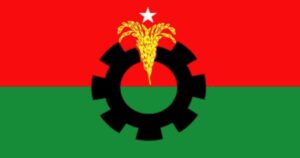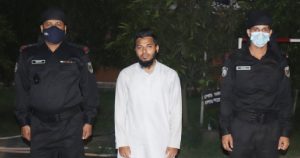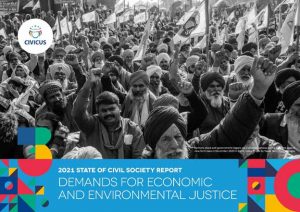by Branko Milanovic
The historic achievement of peace within a Europe of universal norms is belied by the external instability engendered by violent and incoherent interventions.
The European Union is justly admired for making war among its members impossible. This is no small achievement in a continent which was in a state of semi-permanent warfare for the past two millennia.
It is not only that we cannot even imagine the usual 19th and
Destabilised
But creating geopolitical stability internally has not, during the last two decades, been followed by external geopolitical stability along the fringes of the union. Most of the big EU member states (UK, Poland, Italy, Spain) participated, often eagerly, in Operation Iraqi Freedom, which led to the deaths of some half a million people, destabilised the middle east even further and produced Islamic State.
Then, seemingly not having learned from this fiasco, France and Italy spearheaded another regime change, this time in Libya. It ended in anarchy, another civil war, two competing governments and a UN Security Council deadlocked for years to come—since it is clear that China and Russia will not in the foreseeable future vote to allow another western military intervention.
The wars along the long arc from Libya to Afghanistan, in which EU powers participated, were the proximate cause of large refugee flows a few years ago, which continue even now. (As I have written elsewhere, the underlying cause of migration is the large gap in incomes between Europe, on the one hand, and Africa and the ‘greater middle east’, on the other, but the sudden outbursts were caused by wars.)
The next example of generating instability was Ukraine, where the then government of Viktor Yanukovych, having only postponed the signing of an EU agreement, was driven out of power in 2014 in a coup-like movement supported by the union. It is sure that a reasonable counterfactual, with the same EU-Ukraine agreements being signed and without a war in eastern Ukraine and with Crimea still part of Ukraine, would have been much preferable to the current situation, which threatens to precipitate a war of even much greater dimensions.
Finally, consider Turkey, in an association agreement with the European Economic Community since 1963, and thus in a membership-awaiting antechamber for more than half a century. The initial period in power of Recep Tayyip Erdoğan was marked by pro-European policies, a desire to create an ‘Islamic democracy’, in the mould of the Christian democracies of Italy and Germany, and civilian control over the army. But
The endless waiting period, with similarly protracted negotiations over what are now 35 chapters which need to be agreed between candidate countries and all 28 (or soon 27) members, is what lies behind the frustration with the EU in the Balkans. Long gone are the days when Greece could become a member after a couple of months (if that) of negotiations and an agreement between the French president, Valéry Giscard d’Estaing, and the German chancellor, Helmut Schmidt. The European bluff—it neither has the stick nor the carrot—albeit long hidden behind the veil of
Slow and hesitant
It all means that Europe needs a much better thought-out external policy with respect to its neighbours. There are already some signs that it is moving in that direction but it is doing so too slowly and hesitantly. A multilateral compact with Africa is needed to regulate migration from a continent with the fastest rising population and lowest incomes. Much more European investment—in hard stuff, not conferences—is needed. Rather than complaining about China’s Belt and Road initiative, Europe should imitate it—and, if it desires to counteract Chinese political influence, invest its own money to make more African friends. A similar set of much more proactive policies is required within the framework of the Mediterranean initiative, while military options in the region should be forsworn no less clearly than they are within the union.
When it comes to the potential members, as in the Balkans or the western republics of the former Soviet Union, interminable talks should be replaced by either special association with no expectation of EU membership or clearer, time-limited negotiations leading to membership. Both would manage expectations better and avoid the build-up of resentment and frustration.
The most important challenge is the relationship with Turkey. The EU does not have a blueprint for a Turkey after Erdoğan; nor can it offer anything to the Turkish secular opposition, as it is not clear within itself whether it wants Turkey in or out. It should be rather obvious that a European Turkey, with its vast economic potential and influence in the middle east, would be a huge economic and strategic asset. Such a Turkey would also behave differently in Syria and in
This rethinking of the EU’s neighbourhood policy thus calls, in short, for three things: greater economic aid to Africa, no support for wars or regime change, and much clearer rules and time-limits for membership talks.
(Branko Milanovic is a Serbian-American economist. A development and inequality specialist, he is Visiting Presidential Professor at the Graduate Center of City University of New York (CUNY) and an affiliated senior scholar at the Luxembourg Income Study (LIS). He was formerly
Solo painting exhibition at AF, Dhaka Feb 8
The inaugural ceremony of the 3rd solo painting exhibition of artist Md Abdul Guffar Babu entitled Pixel of
Enayetullah Khan, chairmen, Gallery Cosmos and Cosmos- Atelier 71 will grace the occasion as the chief guest. Professor Abul Barq Alvi, Faculty of Fine Art, University of Dhaka will also present during the opening ceremony as the guest of honour.
About the Exhibition: Emotion can be defined as an intellectual activity of the human psychology or a particular degree of expression reflecting pleasure or dissatisfaction. Emotion is complex. It changes due to the physical and mental states of every human being. Some theories posit emotion as a syndrome of elements that includes motivation, feeling, behaviour, and physiological changes — but emotion’s definition remains so vast as to be almost intangible.
Interestingly, art is a medium to express emotion in the form of pictorial depictions that are widely used and accepted. The artist tries to reflect in his canvas the emotional changes people go through in their daily lives due to socio-economic and political conditions and hardships. He also tries to enframe those different phases of emotional states amalgamating with a conceptualized setting. Md Abdul Guffar Babu believes these ‘frames’ may somewhat express emotion in the breadth of its definition.
Artist Abdul Guffar Babu obtained his MFA from the Department of Print Making, Faculty of Fine Art,
The exhibition will be open to all till 22 February 2019 at La Galerie, Alliance Française de Dhaka.
Visiting Hours: Monday to Thursday from 3:00 pm to 9:00 pm, Friday and Saturday (9:00 am to 12: 00 pm and 5:00 pm to 8:00 pm). Closed Sunday. – Press release




